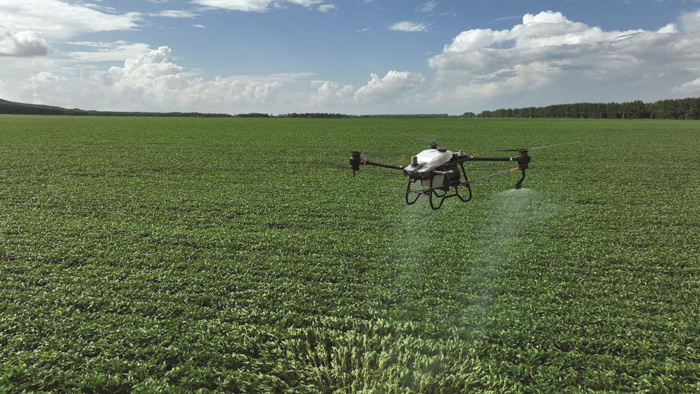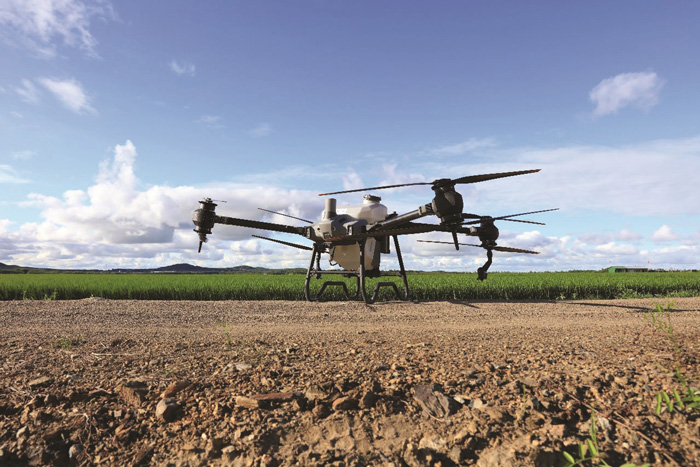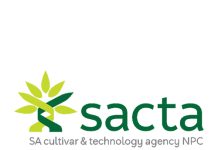
SA Graan/Grain contributor
‘Drones have become increasingly popular in agriculture, where they have proven to be valuable tools for precision farming. In South Africa, the use of drones in agricultural practices, specifically for spraying pesticides, has gained significant attention.
However, it is essential for operators to understand the licensing requirements and regulations surrounding the use of drones for agricultural purposes to ensure compliance and responsible use,’ says Tim Wise, CEO of PACSys, which specialises in the supplying of crop spraying drones.
SACAA
The South African Civil Aviation Authority (SACAA) is the regulatory body responsible for the oversight and regulation of civil aviation activities within South Africa, including the operation of drones. To legally operate a drone for agricultural pesticide spraying, operators must adhere to the guidelines set forth by the SACAA.
To operate a drone for agricultural purposes, specifically for pesticide spraying, operators are required to obtain a Commercial Remote Pilot License (RPL) and register as a Pest Control Operator (PCO) with the Department of Agriculture, Land Reform and Rural Development (DALRRD). Both the RPL and PCO registration are mandatory certifications that ensure operators have the necessary knowledge and skills to safely and effectively operate drones in commercial settings.

The RPL and PCO certification processes involve several steps, including theoretical and practical examinations, medical evaluations, and background checks. Operators need to undergo proper training and meet the eligibility criteria set by the SACAA and DALRRD to qualify for the RPL and PCO registration.
Certificate of airworthiness
In addition to the RPL, drones used for pesticide spraying in agricultural practices must also obtain a Certificate of Airworthiness (CoA). The CoA is issued by the SACAA and certifies that the drone meets the required safety standards and is deemed airworthy for operation.
To obtain the CoA, operators must submit detailed technical specifications of the drone, including its design, construction, and maintenance documentation. It is also crucial to ensure that the drone and its associated components comply with the applicable SACAA standards and regulations.
Operating conditions and restrictions
Once operators have obtained the necessary licenses, some specific operating conditions and restrictions must be adhered to when using drones for agricultural pesticide spraying in South Africa. Some key considerations include:
- Flight authorisation: Operators must obtain flight authorisation from the SACAA for each flight conducted. This ensures compliance with airspace regulations and prevents potential conflicts with other aircraft.
- Areas: Operators must be aware of restricted airspace areas, such as airports, military installations, and national parks, where drone operations may be prohibited or restricted.
- Visual line of sight (VLOS): Drone operations must always be conducted within the visual line of sight of the operator, ensuring effective control and avoiding potential hazards.
- Weather conditions: Operators should monitor weather conditions before and during flights to ensure safe operations. Drones should not be flown in adverse weather conditions that may compromise flight safety.
- Privacy and data protection: Operators must respect privacy rights and data protection regulations when using drones for agricultural purposes. Sensitive information should be handled responsibly and in compliance with relevant laws.
‘By following the licensing requirements and regulations, South African producers and agricultural professionals can harness the full potential of drone technology to enhance their farming practices while maintaining compliance with the law and minimising risks to both the environment and public safety,’ says Wise.

Crop pesticide spraying by drones has numerous advantages
- Traditional methods can result in inconsistent and uneven application. However, drones allow for more precise application and can get close enough to spray almost 100% of field areas despite challenging terrains. This is thanks to sensors and GPS mapping on the drones that are smart enough to adjust their height according to the terrain. This allows producers to remove human error and maximise the surface area of fields.
- Drones are more fuel-efficient, using up to 60% less fuel than a manned aircraft when the batteries are charged by generators.
- Many small farmers have been denied quality aerial pesticide applications because they are based in remote areas or they have fields that are too small to make it cost-effective to spray by using standard aerial application.
- Drones can help these farmers as they can undertake multiple flights in multiple locations in one day and can be transported from the back of a bakkie.
- Drones are capable of achieving better penetration when compared with traditional aircraft due to the drones flying at slower speeds and the nozzles being located below the propellers.
- When compared with tractor boom applications, drones are cheaper to purchase and to operate, they eliminate the crop loss associated with tractor compaction and they utilise only 10% to 15% of the water required for tractor boom applications.
For more information contact Jeandré de Beer on 071 044 6200 or send an email to jeandre@pacsys.co.za.

















